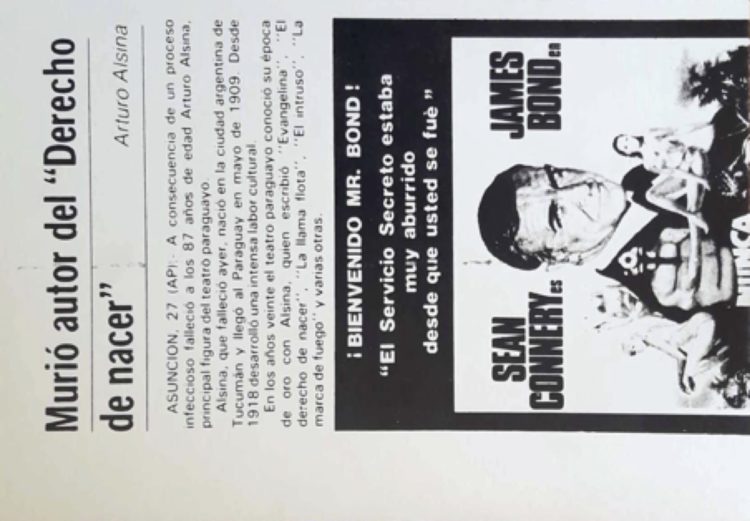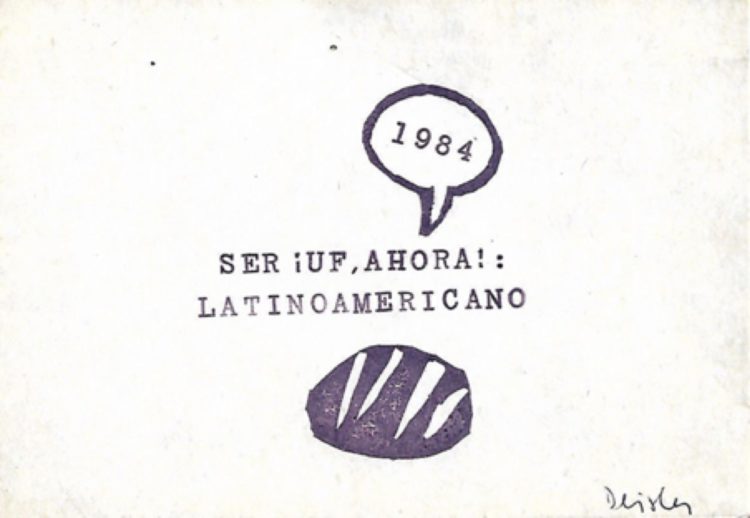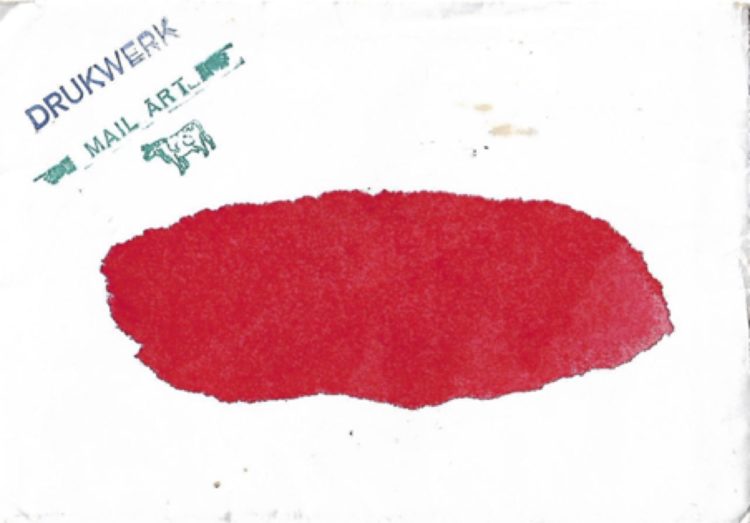Search
To search for an exact match, type the word or phrase you want in quotation marks.
A*DESK has been offering since 2002 contents about criticism and contemporary art. A*DESK has become consolidated thanks to all those who have believed in the project, all those who have followed us, debating, participating and collaborating. Many people have collaborated with A*DESK, and continue to do so. Their efforts, knowledge and belief in the project are what make it grow internationally. At A*DESK we have also generated work for over one hundred professionals in culture, from small collaborations with reviews and classes, to more prolonged and intense collaborations.
At A*DESK we believe in the need for free and universal access to culture and knowledge. We want to carry on being independent, remaining open to more ideas and opinions. If you believe in A*DESK, we need your backing to be able to continue. You can now participate in the project by supporting it. You can choose how much you want to contribute to the project.
You can decide how much you want to bring to the project.

Chilean artist Víctor Hugo Codocedo ― nicknamed El Bacán or La Motta on account of his dense curly hair ― passed away in 1988 aged thirty-four, leaving his contemporaries with an enigma. Characterised by a delightful sensuality and talent, he had the unique quality of moving between the conceptual art scene of alternative galleries, and others that unfolded on its margins. He took part in projects associated with human rights activism along with Luz Donoso and Hernán Parada, and with painters described as pleasant, uninterested in rendering tumultuous social contingency, such as Samy Benmayor or Bororo. His most long-standing artistic relationship was with postal or mail art.
Mail art is a genre that lies in the extra-artistic circulation of letters and international postal institutionalism, and puts pressure on the distinction between tradition and art/life. According to Dutch mail artist and theoretician Ruud Janssen, the mail art genre – classified with conceptual movements and Fluxus – typically includes those who produce and exchange postcards or types of letters, design stamps or seals and decorate, illustrate or print envelopes, besides the networks of transnational cultural transfer implied by such exchanges.

Víctor Hugo Codocedo, September 1983. El derecho de nacer, mail art, coated paper and offset printing, 15 x 10 cm. Courtesy of the Paula Codocedo Archive

Víctor Hugo Codocedo, November 1984, El derecho de nacer II, mail art, coated paper and offset printing, 15 x 10 cm. Courtesy of the Paula Codocedo Archive
The mail art production of Víctor Hugo Codocedo is almost a myth among experts. The only renowned examples of Chilean mail art are the ‘aero-postal paintings’ by Eugenio Dittborn, which he began to make after his solo exhibition 20 pinturas aeropostales held in 1984 at the Museo de Arte Moderno La Tertulia in Cali, Colombia.[1] The artist produced mail art works like Doble superficie (29 September 1981), El derecho de nacer (September 1983) and El derecho de nacer II (November 1984), and made a significant contribution to mail art theory with essays like ‘Arte correo, Mail Art o arte postal’, published in the first Boletín de la Asociación de Pintores y Escultores de Chile in 1985. He also organised several conferences, such as the First Mail Art Workshop (August 1985), and the First Chilean Mail Art Congress (March 1986) together with Patricio Rueda.
Mail art assumed a strong commitment to international political solidarity by setting up counter-information networks to control human rights abuse in Latin America by dictatorial state terrorism and imperialist interventionism during the Operation Condor. This enabled the precarious communicative materiality to confirm a number of marginal and marginalised experiences on an international scale through the micro-political generation of artistic practices and experimental poetry. I must mention the work of the Conceptualismos del Sur network, whose members declare that ‘a series of artistic-political experiences … allow us to explore the hypothesis of the persistence of internationalist impetus’ in the eighties, reviving certain socialist discourses and practices of the sixties recognised as ‘Third World internationalism, chiefly embodied in national and anti-colonial liberation movements in Africa and Latin America … shaped by a broad social spectre that includes the middle classes and the peasantry’.[2]

Guillermo Deisler, 1984, Ser ¡uf, ahora!: latinoamericano, mail art, Roneo paper, stamped, 15 x 10 cm.
Courtesy of the Paula Codocedo Archive

Guillermo Deisler, 1984. Reproductions of mail art works, O DOS, 1, 18 N. N. Argañaraz (dir./ed.)
Courtesy of the Paula Codocedo Archive
In this sense, I would like to highlight the work of Chilean artist Guillermo Deisler who, following the military coup, sought exile first in Plovdiv, Bulgaria and then in Halle, Germany. Deisler managed a group of mail art networks including PEACEDREAM – PROJECT, POST TRY, SUBJECT MATTER and UNO year(s) of peace during the dictatorship period. On a 1984 postcard sent to Víctor Hugo Codocedo, which Deisler considered visual poems, he illustrated a round shape with segmented lines in the negative that seem to represent a loaf of bread, to which he added the text ‘SER ¡UF, AHORA!: / LATINOAMERICANO’ (TO BE, PHEW, NOW!: / LATIN AMERICAN) and an upper speech bubble characteristic of comic books that points to the year of production. In 1984, mail art works by Deisler reproduced in O DOS magazine, 1984, directed by mail art artist and writer N. N. Argañaraz from Montevideo, show iconographic coincidences.

Internationales Mail-Art Projekt, April 1984 Nicaragua – Hoffnung und Politik, call for a mail art exhibition, butter paper, typewritten, stamped and manuscript, 21 x 36 cm. Courtesy of the Paula Codocedo Archive
One instance of solidarity in mail art networks appears under the wing of the exhibition entitled Nicaragua – Esperanza y política that commemorated the fifth anniversary of the Nicaraguan Sandinista Revolution of 1979 in Germany. An envelope stamped in Freiberg on 23 April 1984 invited Víctor Hugo Codocedo to send a work before the 30 or 31 May, under the following instruction: ‘You may send your works in each graphic technis [sic], if possible / by registered post[3] and in any size.’ While the notice indicated that the works would not be returned, it did guarantee the emission of an acknowledge receipt for each consignment and documentation on the exhibition. It’s interesting to note how this and other mail art calls rebuked the logic of copyright or selection to validate the art institution, proposing a scale of cultural values on the margins of the art system in the First World, and justifying the ‘DIFFUSION’ of the call. A similar exhibition exercise, Contra el bloqueo a Nicaragua, was organised the following year by mail art artist Clemente Padín and the Uruguayan Mail Artists’ Association.[4]

Colectivo de Arte Postal Libertad para Ulises Gómez mail art collective, 1984 Libertad para Ulises Gómez preso en Chile, mail envelope, stamped and painted, 20 x 10 cm. Courtesy of the Paula Codocedo Archive

Colectivo de Arte Postal Libertad para Ulises Gómez, 1984
Libertad para Ulises Gómez preso en Chile, call for a mail art exhibition, bond paper, typewritten, stamped and painted, 21 x 36 cm.
Courtesy of the Paula Codocedo Archive
Finally, I should like to announce the creation of the Colectivo de Arte Postal Libertad para Ulises Gómez [Freedom for Ulises Gómez Mail Art Collective], this time under the wing of an exhibition in Stockholm held towards the end of 1984 in solidarity with the Chilean political prisoner. The journalist had been ‘arrested on 5 October [of 1979] by officers from the [illegal secret police corps] Central Nacional de Informaciones’, who ‘showed no order but nevertheless proceeded to break and enter’.[5] He wouldn’t be released until 1987. The striking visual poetics of the red stain on the envelope and on the letter of the call is a strong allusion to the spilt blood that makes them into mail art works. Víctor Hugo Codocedo was invited to take part with a work he could send up until 1 November of that year at the latest, either a ‘DRAWING, PHOTO, POEM, MULTIMEDIA WORK, ETC.’ in ‘2 OR 3 DIMENSIONS’, which would be displayed in an exhibition along with the video entitled ODYSSEE by Juan Castillo, a Chilean artist based in Sweden and a friend of Ulises Gómez’s. Once again, we discover a certain ethic of reciprocity in the transnational exchange of mail art when in the lower right margin of this communiqué we read that, although the works will be sent ‘Without reTurn’, ‘Al [sic] / ParTiciPants will recieVe / a CataLoGUE’ [sic] of the exhibition.
I’ve explored the hypothesis that the problem of authority which, according to psychoanalysis, is reflected in the father figure, motivated most of the plastic research by Víctor Hugo Codocedo. The latter was influenced by the autocratic regime of Augusto Pinochet, who exterminated a great number of freethinkers and plunged the country into rampant unemployment and poverty as a result of the move to a neo-liberal economy. Thanks to the artist’s daughter Paula Codocedo, who safeguards a part of his documentary heritage and whose encouragement enabled me to learn more about the great man, I gained access to hitherto unexplored aspects of his personality. Serie de la bandera (1979-1981) is almost the only entry of his in the history of Creole art. As you see, there is much to be found on the margins.
(Highlighted image: Víctor Hugo Codocedo, 29 September 1981 Rumbo. La Revista Estudiantil, 129, 5, double surface)
[1] Vania Montgomery, ‘Un día entero de mi vida. Citas, envíos y transfiguraciones de Eugenio Dittborn’, Boletín del Centro de Estudios de Arte, 5, 37, 2018.
[2] Francisca García, Sol Henaro, Ana Longoni, Fernanda Nogueira and Paulina Varas, Perder la forma humana. Una imagen sísmica de los años ochenta en América Latina, Museo Nacional Centro de Arte Reina Sofía, Madrid, 2012, p. 154.
[3] The English translation allows us to infer that the reference is to a postal delivery.
[4] Francisca García, Sol Henaro, Ana Longoni, Fernanda Nogueira and Paulina Varas, op. cit., pp. 156-159.
[5] Vicaría de la Solidaridad (October 1979). Legal situation observed during the month in question. Informe confidencial, 2, p. 12.

Aliwen (Santiago, 1993) is a critic, independent curator, autonomous researcher, musician, performer and mestizo weaver. Her interests move between the arts, anarchist autonomism, daily decolonization and divergent sex-affectivities, and she activates different processes of artistic, archival and scenic research that allow her to intersect these problems in a fluid way. Bachelor of Arts with a Mention in Theory and History of Art from the University of Chile, Master in Artistic Studies and Curatorial Practices from the Tokyo University of the Arts as a 2020 Monbukagakusho Scholar. She fights for human rights, especially those of trans * people, non-binarixs, femme subjects, people living with HIV / AIDS and brown people. Her first book critical of barricade. Cuerpx, Writing and Visuality in Contemporary Chile will be published in 2021 by Sangría Editora.
"A desk is a dangerous place from which to watch the world" (John Le Carré)